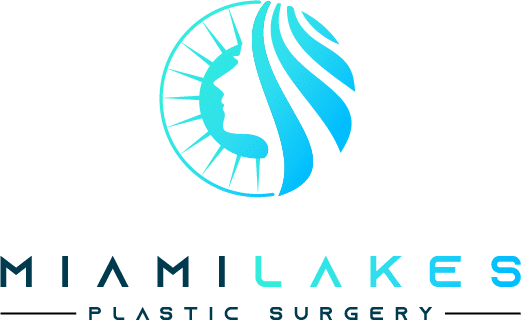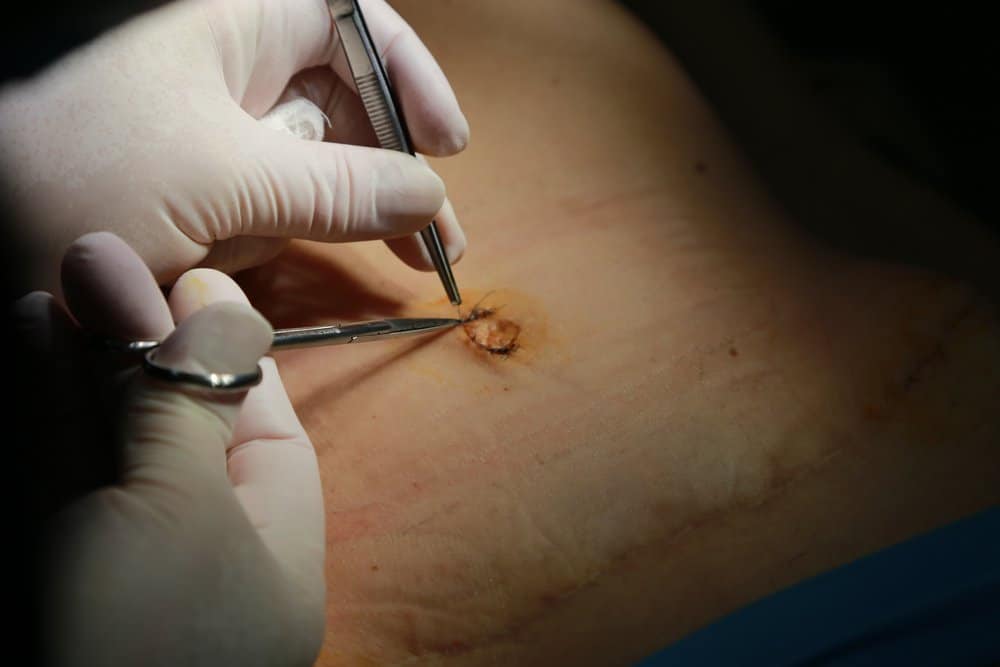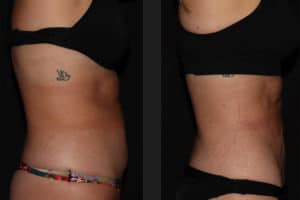Cosmetic surgery procedures are an excellent way to achieve your aesthetic goals. Tummy Tuck in Miami, also known as Abdominoplasty, is a surgical procedure performed by a qualified plastic surgeon to tighten loose muscles, remove access fat from the abdomen, and ensure an aesthetically pleasing and contoured body.
A growing body of research evidence has highlighted the benefits of tummy tuck for women who want to lose fat in the abdominal region. It is an essential procedure for people who don’t have enough time for exercising and dieting. Bear in mind that undergoing tummy tuck won’t stop you from gaining weight.

Therefore, it is crucial to understand the advantages/disadvantages and risks associated with a tummy tuck. The purpose is to know the results you can expect and understand different post-operative caring techniques to prevent gaining weight in the future.
Up to $1000 Off Tummy Tuck in Miami – Get your dream body now!
A belly button is an important part of your tummy and a symbol of feminine beauty. However, women who undergo tummy tuck may have a poorly shaped belly button. Some women also have an infected belly button after the procedure. Today’s article will discuss what happens to the belly button after the surgery and how you can prevent complications. Read on!
Stages of Belly Button Healing After a Tummy Tuck
Understanding the healing process of the belly button post-tummy tuck is crucial to setting realistic expectations and maintaining peace of mind.
Phase 1: Initial Healing (Days 1-7)
The initial week post-surgery is marked by swelling and redness around your belly button. Keeping the area clean and following your surgeon’s post-operative care instructions are paramount.
Phase 2: Inflammatory Stage (Week 2-3)
The second phase witnesses increased sensitivity and possibly some itching. It’s a clear sign of the healing process in action.
Phase 3: Proliferative Stage (Week 4-6)
By the fourth week, new skin and blood vessels begin to form, and your belly button starts to regain a natural appearance. Swelling and discomfort should lessen noticeably.
Phase 4: Maturation Stage (Month 2 onwards)
The final stage, where the scar lightens and the tissues regain strength, can last from a few months to a year. It indicates complete healing.
Remember, each body heals differently, and these stages might not be uniform for everyone. Patience and open communication with your healthcare provider will help ensure the best possible outcome.
Up to $1000 Off Tummy Tuck in Miami – Get your dream body now!

Infected Belly Button After Tummy Tuck
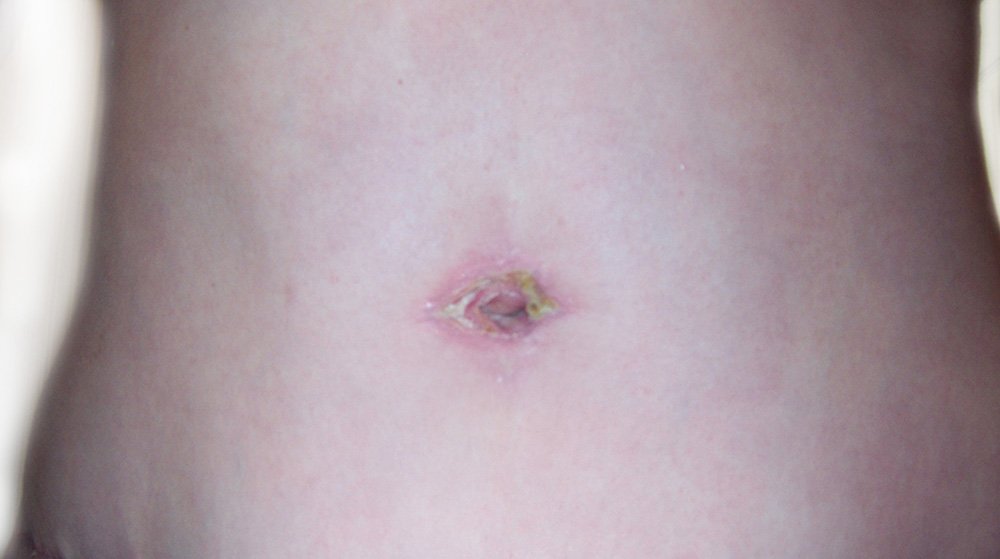
Research shows that operative site infections and seromas are common complications following tummy tuck surgery. Most studies show that post-surgery infections are prevalent in 1% to 3% of patients.
Inflammation is the belly button, and surrounding areas are usually characterized by tenderness, edema, erythema, and fever. Patients with diabetes, malnutrition and immunosuppressed states are at higher risk of belly button infections.
No Belly Button After Tummy Tuck
Tummy Tuck is an excellent procedure to remove excess fat from your belly or abdomen. The primary objective of this surgery is to tighten the muscles in the stomach area and smoothen the overall abdominal appearance.
However, the procedure can change your belly button’s appearance. After the surgery, a patient’s belly button can appear more horizontal and vertical. Although this problem resolves over time, sometimes, there is no belly button.
Remember, not having a belly button after tummy tuck is not a severe complication. The good news is that you can discuss it with your health provider and plan to create a belly button via a cosmetic procedure.
These can change the appearance of your belly button, making it appear more horizontal than vertical. If you’ve had surgery later in life and don’t have a belly
Up to $1000 Off Tummy Tuck in Miami – Get your dream body now!
Belly Button Issues After Tummy Tuck
During the tummy tuck, the surgeon makes an incision in the low abdomen to remove the stretched skin and fat deposits. The surgeon sews the loose muscles and makes another incision around the belly button. Not taking care of the incision sites during the rehabilitation can lead to belly button issues.
The recovery timeline after the procedure varies depending on different factors, such as your age, health status, weight, and immune system. Because the drainage tubes that pull the fluid away from your abdominal region will remain in the area for a few days.
It is crucial to wear an abdominal binder for about 1.5 months. The binder is a tight band around your belly, supporting your muscles and preventing the accumulation of fluids.
That’s why we recommend wearing the binder and avoiding strenuous activity for proper healing of your belly button. Otherwise, you will experience belly button complications after the procedure. Always follow your health provider’s instructions to achieve your goals.
1 – Yellow Discharge from Belly Button After Tummy Tuck
Most women experience a yellow discharge from their belly button after the procedure, causing a lot of frustration and panic. However, you must not worry because the thick release from the incision site or belly button is normal for 10-20 days. After all, this is liquified fat.
You can stop the drainage by covering your belly button with dry gauze. If the discharge continues after 20-25 days, make sure you contact your health provider. Your surgeon will give you instructions on how to deal with the problem.
2 – Belly Button Leaking Fluid After Tummy Tuck
Some patients experience leaking fluid from their belly button after a tummy tuck. The primary cause of this problem is not maintaining proper hygiene during the recovery period. Germs, fungus, bacteria, dirt, and other environmental pollutants accumulating on the incision site trigger the leaking fluid mechanisms.
So, if you notice any signs of leaking fluid or infection in the belly button during the recovery period, call your health provider immediately. Sometimes, too much constriction or opening can lead to discharge or pus drainage from your belly button, seeping a yellow or white discharge.
3 – White Inside Belly Button After Tummy Tuck
After the tummy tuck procedure, the primary cause of white inside the belly button is skin necrosis. It is crucial to prevent skin necrosis by applying ointments prescribed by your health provider.
At the same time, don’t stress because this takes a few weeks to heal. The whitish material appearing on your belly button is also due to removing dead skin cells by your body’s natural mechanisms.
4 – Hard Lump Above Belly Button After Tummy Tuck
Although a tummy tuck is a safe procedure, some patients show concern about a bulging belly button or a hard lump above it. Inflammation and swelling in the surgical site are the primary reason behind the hard lump above the belly button.
Research shows that blood and lymphatic vessels perform the function of drainage for fluids. However, during the procedure, the surgeon cuts these vessels. As a result, the fluid accumulated causes a hard or tender lump. Other symptoms include nausea, vomiting, and abdominal pain. Call your doctor if the pain is unbearable.
Up to $1000 Off Tummy Tuck in Miami – Get your dream body now!
Belly Button Stitches After Tummy Tuck
Taking care of the incision site or stitches during the recovery period is crucial to avoid infections and other complications. Most surgeons recommend leaving sutures for 14 to 21 days to prevent incisions or stitches from opening.
Remember, tension and stress placed on stitches after the tummy tuck procedure is considerable, but make sure you follow your health provider’s instructions and give your body additional time to secure the wound.
Dark Belly Button After Tummy Tuck
The dark belly button after the procedure is due to the accumulation of dead skin cells and sebum oil secreted by the skin. If you fail to follow your surgeon’s guidelines, the deposits of dead skin cells and fluids may form an omphalolith.
Keloid Belly Button After Tummy Tuck
Keloid scars after the tummy tuck in the belly button area are not common. Therefore, it is wise to call your doctor immediately and seek appropriate treatment. There are numerous methods to prevent or treat keloid scars during rehabilitation.
For example, cortisone injections into the keloid belly button every 4-6 weeks will flatten the scars and fade their appearance. You can also use silicone sheeting to reduce the visibility of your keloid belly button scar.
Belly Button Closing After Tummy Tuck
The surgeon makes an incision in the low abdomen during the tummy tuck. The purpose is to lift the abdominal skin. The surgeon makes an additional incision around the belly button to release the fat cells or skin from the surrounding area. However, your belly button remains attached to the stalk.
In addition, it is normal to experience swelling around your belly button for a few days or weeks. Your belly button may also appear slightly crusty during the recovery period. It takes six months for the belly button to heal. Once your body has healed the wound, you will undergo another procedure under local anesthesia to improve your belly button’s shape.
How To Clean Belly Button After Tummy Tuck?
Each patient is unique, meaning the recovery process varies from person to person. Depending on your overall health status, you may not go to the office or work for one to two weeks. Ensure you follow your health provider’s aftercare instructions, clean the incision site, and wear compression garments for an efficient and quick recovery.
In addition, you must avoid strenuous physical activities, such as intense workouts and weightlifting for a specified period. The question is: how to clean your belly button after the procedure. Well, it is an easy task, requiring you to soak a cotton swap in hydrogen peroxide and clean your belly button. Most surgeons recommend cleaning the belly button at least once or twice a day.
Up to $1000 Off Tummy Tuck in Miami – Get your dream body now!
Belly Button After Tummy Tuck Photos
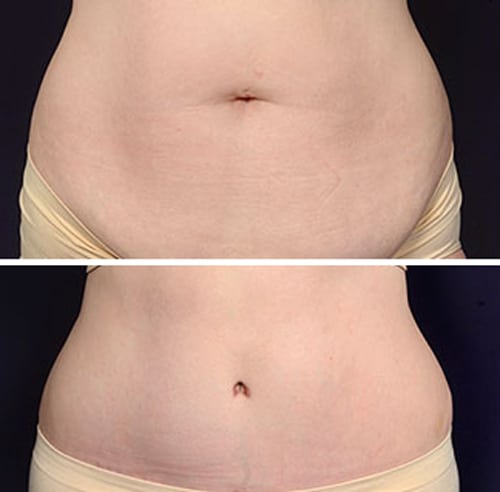
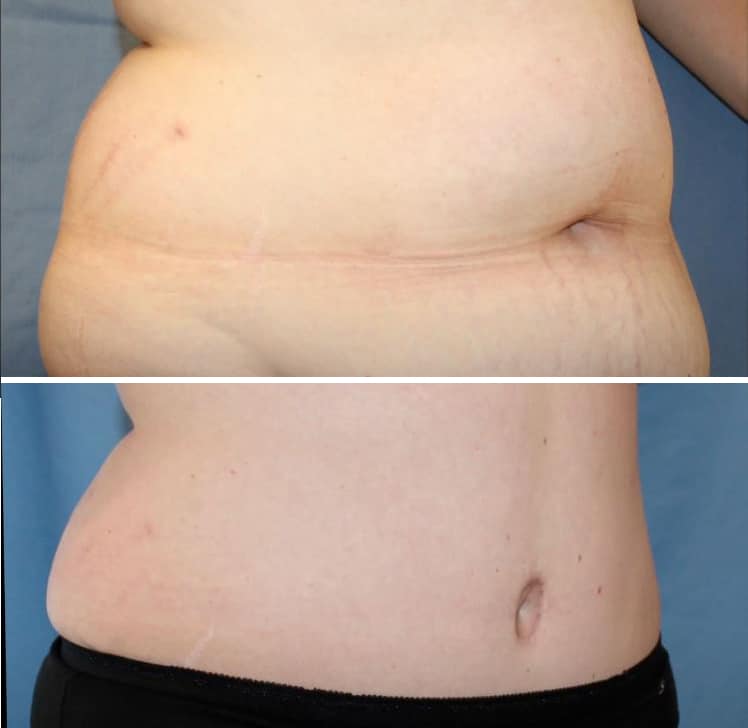
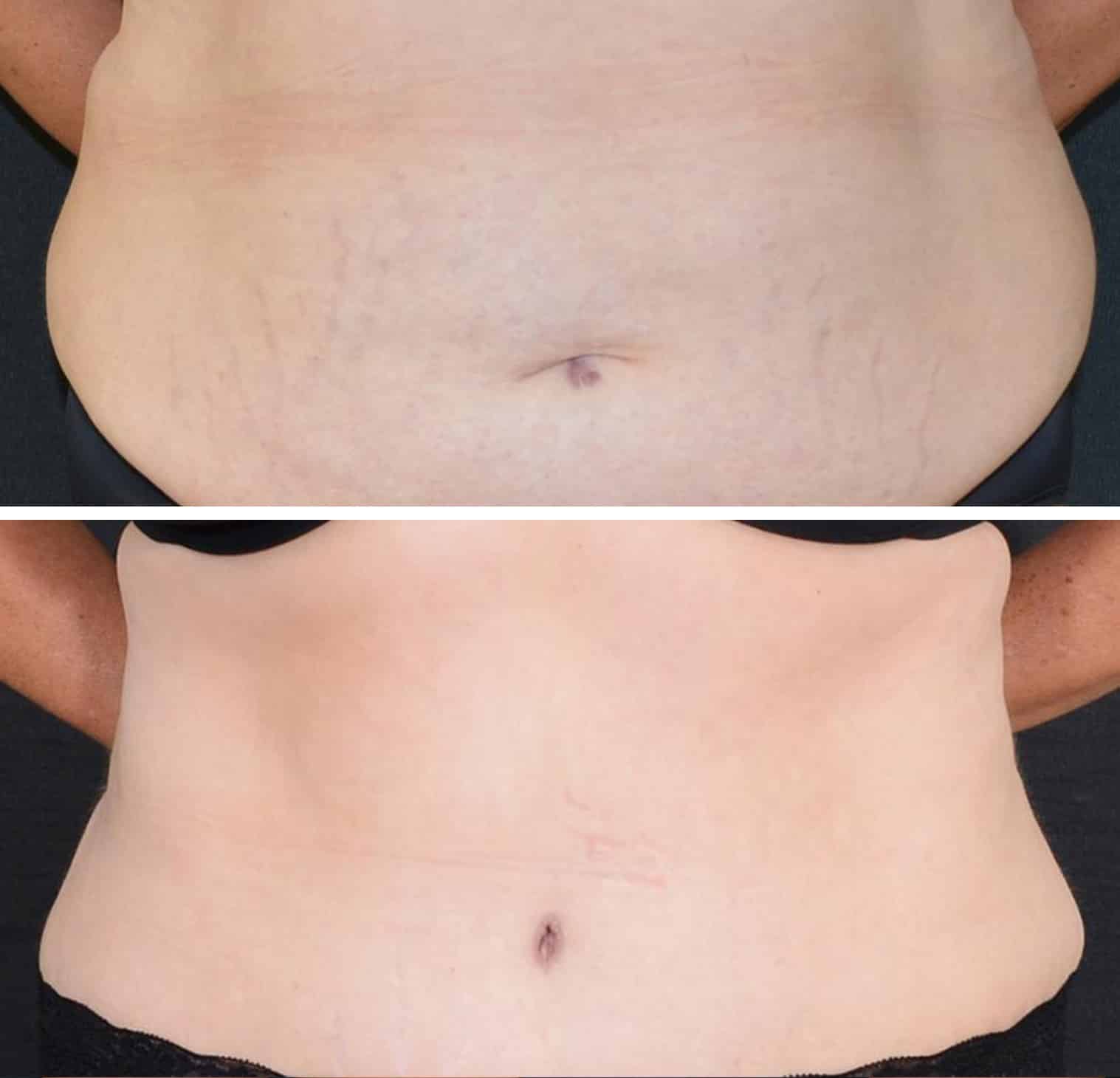
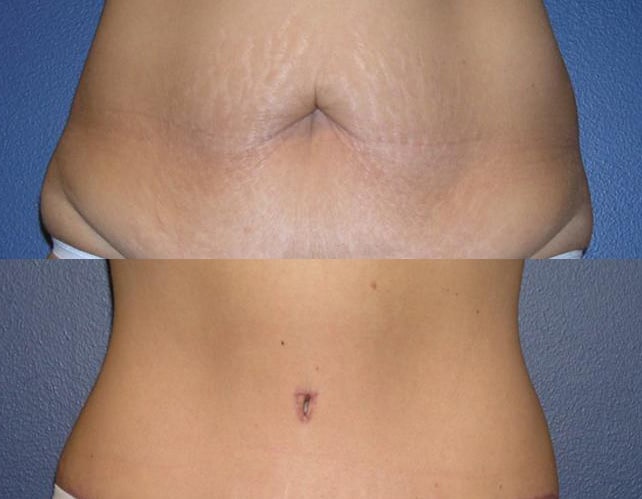
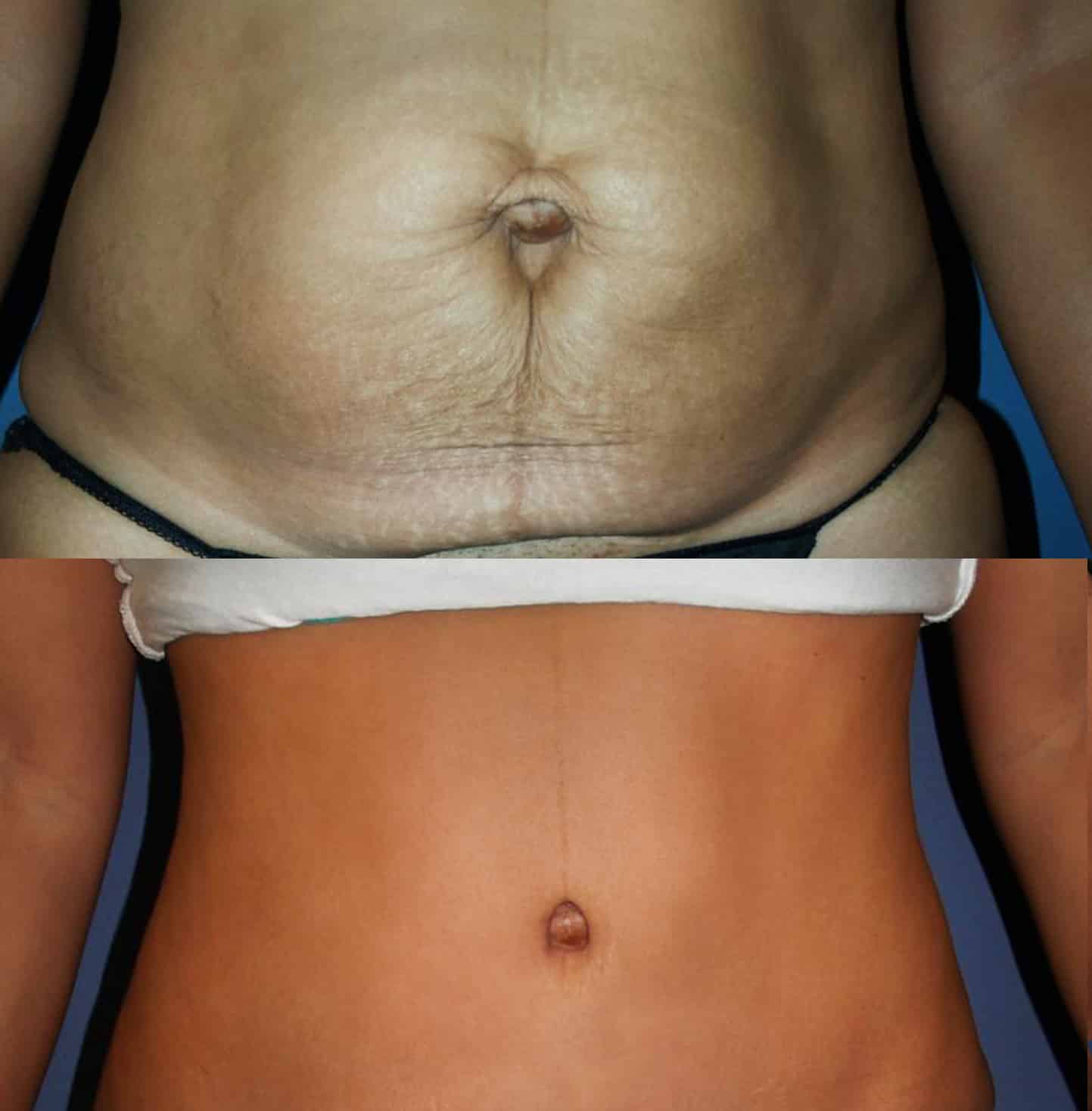
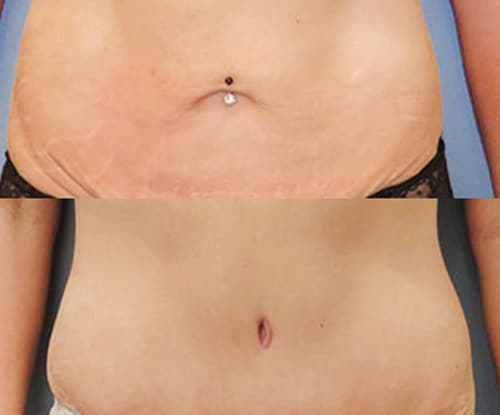
Belly Button Piercing After Tummy Tuck
Qualified, board-certified, and experienced cosmetic surgeons recommend avoiding belly button piercing after tummy tuck for at least one to two years. The purpose is to ensure proper blood flow to the belly button and surrounding area for proper healing and restoration.
Belly Button Revision After Tummy Tuck
Most women usually consider belly button revision after a tummy tuck. The primary reason to undergo revision surgery is to reshape or restore the normal shape of your belly button.
The belly button disappears or becomes smaller after the tummy tuck in some situations. Some patients even have a more stretched-out or elongated-slit appearance.
The revision surgery is an excellent way to reshape your belly button. So, if you are unhappy with the shape of your belly button after the tummy tuck, wait for at least eight to twelve months. Then, discuss your requirements with a qualified surgeon in Miami.

Up to $1000 Off Tummy Tuck in Miami – Get your dream body now!
Belly Button Too High After Tummy Tuck
Poor repositioning of your belly button is a sign of undesirable cosmetic surgery. For example, if you notice your belly button is too high after the procedure, it is due to the pulling and tightening of the skin that has distorted the original position and shape of your belly button. A tummy tuck revision surgery can restore your belly button’s original position/height.
Flat Belly Button After Tummy Tuck
Your belly button’s shape is determined by the skin attached to the muscles. The small incision made by the surgeon during a tummy tuck leaves it attached to the wall underneath the abdominal muscles.
The pulling of released skin and removing fat from the belly button is the possible cause of a flat belly button after a tummy tuck. The problem worsens if an inexperienced surgeon has performed the surgery.
That’s why we recommend hiring a professional cosmetic surgeon service to avoid complications. Otherwise, you can undergo revision surgery to reposition your belly button once your abdominal area is entirely flat with tightened skin.
References:
- Hourglass Tummy Tuck Miami – Retrieved from Moon Plastic Surgery
- Tummy Tuck Miami – Retrieved from Moon Plastic Surgery
- Tummy Tuck – Retrieved from Boutinic Aesthetics
